Want to save money and go disposable free? You can reduce paper and plastic with these twelve natural, reusable alternatives for common household disposables.
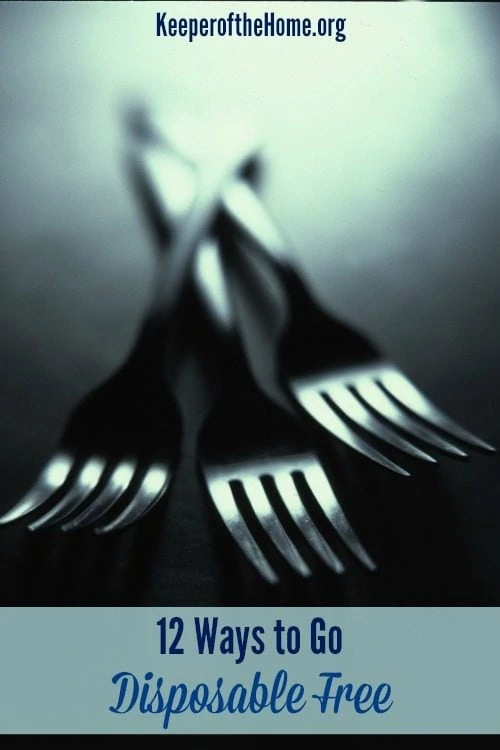
One of the easiest transitions to living a more natural life is to reduce using disposable products.
Not only does cutting back on using disposable products minimize your exposure to toxins found in plastics and bleached paper, but it is also an eco-friendly way to save you money!
The most important thing in learning to live a healthier life is to take one baby step at a time. These 12 ways to go disposable free can get you started.
Perhaps some families will choose to embrace all twelve, but others may want to start with one or two. Our family, for example, will probably never convert to number 7. (Now doesn’t that make you curious enough to scroll down and see what it is?!)
If you do choose to tackle all twelve, you may even want to challenge yourself to make one simple switch each month. By the end of the year, you will be largely disposable free!
Without further ado, check out these 12 ways to go disposable free!
1. Napkins and Paper Towels
As a newlywed, I used some wedding money to purchase a set of cloth napkins. Back then, I considered that we would only bring these out on special occasions–on holidays or when company dined with us.
When we went through a period of living on a low income, I realized that these special napkins could save us money!
In addition, I began using dish towels instead of paper towels for everyday spills and messes.
My family did not give up paper towels all together, though. We keep them on hand, but we always reach for the cloth versions first.
I have one friend who keeps her paper towels under her kitchen counter, so she’s not as tempted to use them every day!
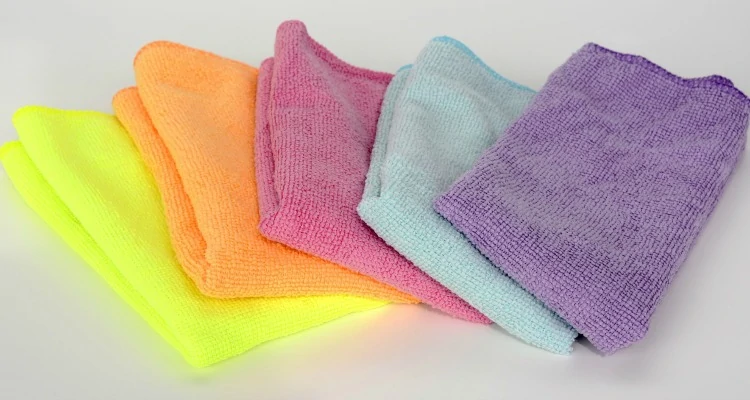
2. Cleaning Products
Disposable cleaning products might be convenient, but their cost adds up over time, and most come with toxins that you don’t want in your home!
Instead, I enjoy using my Norwex cloths for cleaning. They are woven with antibacterial and antimicrobial silver!
There are other microfiber options, and you can also make your own reusable disinfecting wipes.
If you’re not even sure where to start when it comes to cleaning your home naturally, this post should help–as well as this one on naturally deep cleaning for a germ-free home!
3. Glass Storage Containers
I had been wanting to get rid of my plastic storage containers for a long time, and I finally took the plunge this year!
Over time, and especially when heated, plastic storage containers can leach toxins into food. This is definitely something I want to avoid at all costs!
Even though we rarely use the microwave at home, my husband still warms his lunches in one while at work. I feel so much better knowing that he is warming it in glass instead of in plastic! You can find a variety of glass storage containers on Amazon.
4. Snack and Sandwich Bags
For times when we’re on the go and I don’t want to pack our food in glass, our reusable cloth snack and sandwich bags have been such a lifesaver. (You can find reusable snack bags on Amazon for not too expensive.)
I do still use plastic bags on occasion–like when sending snacks with my preschool-aged children. They are not quite responsible enough yet to keep up with something they need to bring home.
My older children have no problem keeping up with them, and I almost always pack them a waste-free lunch.
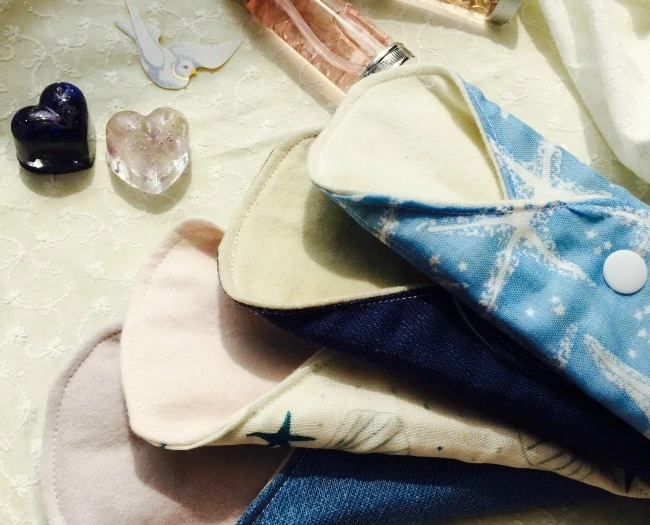
5. Feminine Products
I began using reusable feminine products–mainly menstrual pads or “mama cloth”— about four years ago.
I love them!
Cloth menstrual pads come in a huge variety of colors and patterns, and I’ve actually found that they make that time of the month a little more bearable—both in mood and in milder menstrual cramping.
In fact, this past summer I stopped using them for a while and began having very heavy cramping again for the first time since before I had children.
There are many different sources for mama cloth, but if your finances are super tight right now, you can even try you hand at making your own! Search the internet for tutorials.
If pads aren’t your thing, you can try using a menstrual cup or sea sponge tampons.
Some women claim that reusable feminine products also contribute to shorter periods and lighter flow.
6. Cloth Diapers and Wipes
If you have babies and toddlers at home, making the switch to cloth diapers and cloth wipes is a great way to cut down on disposables.
Using cloth diapers and wipes have saved us thousands of dollars over the years, but I give myself grace and will now use disposables during stressful life seasons or during travel.
When I first discovered cloth diapers, I became quite the addict—so much so that I began working for an online cloth diaper store and then wrote an entire cloth diaper handbook with my compilation of research, troubleshooting and in-the-trenches experience.
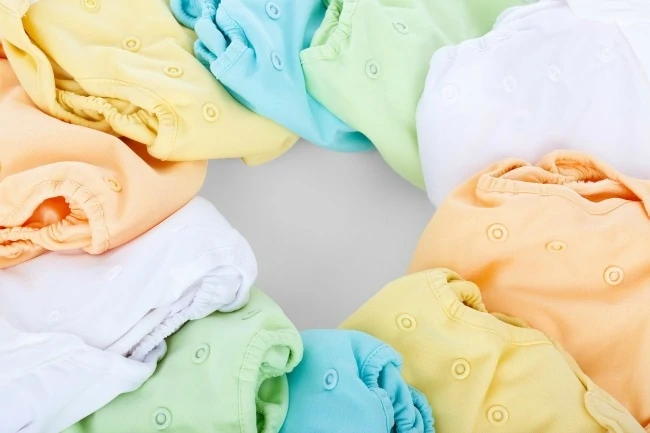
You can get started on your cloth diaper journey with the following posts from my site:
- Why Should You Use Cloth Diapers?
- Affording Cloth Diapers on a Low Income
- Convincing Daddies to Use Cloth Diapers
- The Different Types of Cloth Diapers
- 10 Ways to Build a Modern Cloth Diaper Stash on the Cheap
- Prepping Cloth Diapers
- How to Wash Cloth Diapers
- How to Give Cloth Diapers a Good Disinfecting Strip
- Wool Diaper Covers: A Perfect Nighttime Cloth Diaper Solution
- Why I Took a Break From Using Cloth Diapers & How I Got Back on Board
7. Family Cloth
So this is one area of disposable-free living that my family will never try.
Still, there are some families who tout the benefits of using family cloth, a.k.a. reusable toilet paper.
Megan at Sorta Crunchy makes an excellent case for why a family might want to consider cloth toilet paper, and Beth at Red and Honey gives a great guide to getting started with family cloth.
If washing soiled toilet paper gives you the heebie-jeebies, you can always try using a bidet. These are extremely popular in Europe and parts of Latin America, the Middle East and Japan.
Both of my siblings married Argentines who were accustomed to in-home bidets. In fact, to make my brother-in-law more comfortable, my parents had a bidet installed in one of their bathrooms!
Dr. Mercola uses a bidet and has a good theory as to why most North Americans don’t use them.
8. Utensils & Straws
Most people use silverware in their homes, but many of us probably send disposables with our children to school and use throw-aways for picnics and other family outings.
Instead of plastic, our family has begun using sets of reusable bamboo utensils. These are cheaper than our good flatwear, so I feel good sending it to school with my kindergartener.
In addition, we use a mix of stainless steel and glass drinking straws.
9. Toiletries
With disposable razors and shaving creams, lotions and soaps that come in plastic containers, we end up accumulating so much waste!
Instead, why not try an electric shaver or at least try the semi-disposable razors that allow you to change out blades?
In addition, you can use a natural soap for shaving instead of creams and gels that come in cans.
My husband likes using shave soap from MadeOn Hard Lotion, and I use plain soap to shave my legs. Using lotion bars (also available from MadeOn), instead of liquid lotion that comes in a container also eliminates the need for disposables, as you can reuse the lotion tins.
We also enjoy using our homemade foaming hand soap that we store in a mason jar soap dispenser.
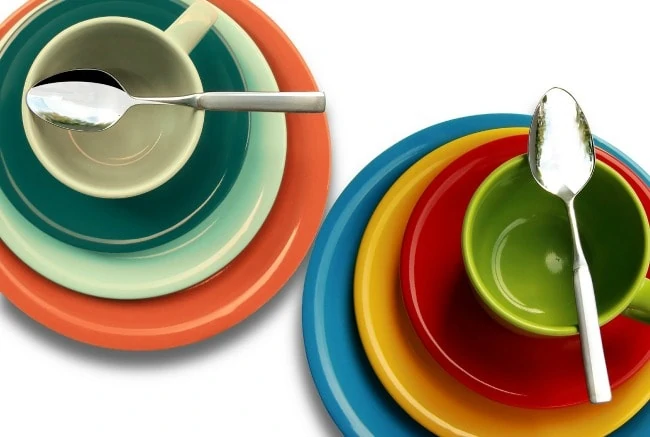
10. Dishes and Cups
While most of us do not use disposable dishes and cups in our home, we can have the tendency to use paper and plastic while out. Invest in a few lightweight, non-fancy dishes to use on picnics!
And instead of buying and throwing away plastic bottles of water, why not use stainless steel or glass alternatives?
11. Handkerchiefs
My family still uses tissues for wiping noses, but other naturally-minded friends have recommended we try using handkerchiefs.
Our grandparents’ generation used handkerchiefs on a regular basis. Imagine how much money we would save by going back to handkerchiefs during cold and flu season!
12. Wool Dryer Balls
I discovered wool dryer balls about four or five years ago, and I’ve never gone back to using dryer sheets!
Not only do wool dryer balls reduce static, but they also speed up drying time.
Conventional dryer sheets contain all kinds of toxins, but if dryer are sheets are something you absolutely cannot part with, you can try your hand at this DIY reusable dryer sheet tutorial!
This is just one way to detox your laundry routine and eliminate disposables in the process!
Bonus: Grocery Bags
If these 12 ways to go disposable free aren’t enough, perhaps the simplest change can be to start with using reusable grocery bags.
Because I have to supply my own bags at my favorite supermarket—Aldi—I have gotten into the habit of carrying reusables in the back of my car.
Some grocery stores even shave a tiny bit off of each purchase when customers supply their own bags. And every little bit counts!
Go disposable-free one step at a time.
I have a tendency to be an all-or-nothing person, but over my 7+-year journey to a healthier lifestyle, I’ve learned that doing that is setting myself up for failure.
Nine times out of ten, our family will reach for a reusable above a disposable, but in recent years I have given myself permission to still use disposables during stressful life seasons. And I think that is OK.
What are your ideas for going disposable free? How many of these 12 ways to go disposable free do you practice in your home?
If you’re interested in learning about cloth diapering, you won’t want to miss my 200+-page handbook, Confessions of a Cloth Diaper Convert: A Simple, Comprehensive Guide to Using Cloth Diapers.
This eBook has helped thousands of families learn how to cloth diaper without spending hours online researching the best practices and troubleshooting challenges.



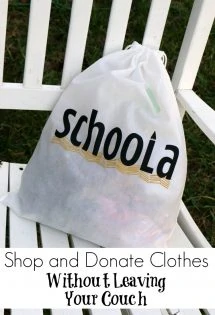


Elaine@biculturalhomeschool
Great list! I couldn’t do #5 and #7 though! But the rest are easily doable, and we’ve already done a few of them (cloth napkins, reusable snack bags). Thanks for posting!
Erin
LOL! They are definitely not all for everyone! I’m glad you are doing a few!
Joe Roy
I like your tip about making one simple switch a month. Certainly better than nothing! It may not be as “convenient” but think about how much better it is for the environment.
Erin
Yes! I must do baby steps or I will set myself up for failure.
Ruth
What a great list! We do everything on the list except for the dryer balls. I don’t use fabric softener or dryer sheets or any kind and we don’t miss it.
Starting in January of this year, I started gradually phasing out disposable items. Ironically, family cloth was one of the first things that I tried. We use a bidet system and keep family cloth available for drying. That means that the laundry really is very easy to wash since the cloth is primarily there for drying off water. Way easier than my cloth diapering days! I usually throw it in with towels if I have some towels that need to be washed. My husband is a huge convert and complains a lot about not having a bidet available at work! LOL! The nice thing is that we didn’t have to purchase a bidet. We simply used our cloth diaper sprayer. It works great!
As the months went by, I gradually purchased other reusable items and phased them in.
1) Napkins
I purchased several dozen, mostly at Goodwill and other thrift stores. I have enough so that I am rarely out of them, even if I’m behind on laundry.
2) Cloth towels
I also purchased these at Goodwill and have a large assortment of them. It’s super easy to wipe up spills and many other tasks with these. I keep them in a basket on my countertop and refill the basket out of the laundry, as I wash and dry them.
3) Glass containers, cloth sandwich bags, etc.
We purchased Pyrex snapware and love them. They’re amazingly strong and even withstand being dropped. I homeschool, so Pyrex covers most of our lunch needs, since my husband is the main one who’s taking a packed lunch. I also have a cloth sandwich bag and some plastic sandwich containers, for kid lunches, on the rare occasion that we need them.
4) Replacements for freezer bags, plastic wrap, aluminum foil, etc.
I freeze things in repurposed glass jars or bowls. I use a cookie sheet to cover a pan while baking, if need be. I got some bowls with snap on lids or will store things in the glass storage containers.
5) Rechargeable batteries
We purchased a charger and some rechargeable batteries. This cost more up front but will save money in the long run.
6) Stainless steel drinking straws
I got 8 of these total and keep them in a glass jar on the counter.
7) Replacement for Paper Plates
We purchased stainless steel plates, stainless steel bowls, and stainless steel cups. We use them anywhere that paper plates would usually be used. They’re easy to wash and great to eat off them. The bowls are double walled so we can eat hot soup without burning our hands carrying it.
8) Handkerchiefs
I have a basket of these on the piano. With my allergies, I’m definitely saving money by using them.
9) Feminine products
I actually used reusable feminine products long before I went green. I first switched to a menstrual cup and cloth pads in 2003. I chose them for the money savings and because I found disposables uncomfortable.
10) Razor
I switched to the Preserve razor. It’s a cartridge razor, so you change the blades only. The handle is made out of recycled #5 plastic and is recyclable once it wears out. My hubby is planning to get an electric razor.
11) Cleaning
I mostly clean with vinegar and baking soda, along with rags. I’ve heard of Norwex, though, and have been intrigued by them. They might be worth trying sometime.
12) Shopping Bags
I bundled up the last of my plastic shopping bags and put them in the recycling bin and switched to cloth bags. My favorite ones are the canvas bags, they are so sturdy! This one doesn’t save me money, but it has sure freed up drawer space. No more shopping bags taking up every nook and cranny.
The great thing is that, like you said, we gradually made these changes. I purchased a few eco-friendly products per month, until we had what we needed.
This month was the first month that I really had next to nothing to buy for the household at the grocery store. I bought two bars of soap and that was it. I look forward to seeing what my monthly average is, now that we’ve changed over so many things.
Erin
These are such awesome tips! We use those stainless steel plates for our kids now too…total game changer! Thanks so much for these great tips!